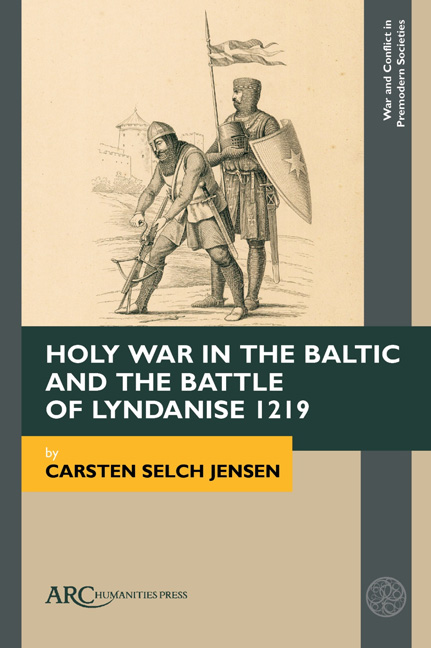Book contents
- Frontmatter
- Contents
- List of Illustrations
- Acknowledgments
- Introduction. Holy War in the Baltic and the Battle of Lyndanise 1219
- Chapter 1 Foreign Shores—Foreign People: The Medieval Baltic and its People
- Chapter 2 Fighting God’s War: Papal Crusading Politics in the Baltic from the Early 1100s until the Early 1200s
- Chapter 3 A Society Organized for War: Denmark at the Beginning of the Thirteenth Century
- Chapter 4 Competing Powers: The German Mission in Livonia and the Initial Quest for Estonia
- Chapter 5 Waging War in the Wilderness: Western Military Traditions Meet Baltic Traditions
- Chapter 6 The Danish Expedition to Estonia in 1219 and the Battle of Lyndanise
- Chapter 7 Conquering Hearts and Minds: The Aftermath of the Battle
- Conclusion A Penny in the Box: How Estonia Came to Save Denmark
- Select Bibliography
- Index
Chapter 7 - Conquering Hearts and Minds: The Aftermath of the Battle
Published online by Cambridge University Press: 08 May 2024
- Frontmatter
- Contents
- List of Illustrations
- Acknowledgments
- Introduction. Holy War in the Baltic and the Battle of Lyndanise 1219
- Chapter 1 Foreign Shores—Foreign People: The Medieval Baltic and its People
- Chapter 2 Fighting God’s War: Papal Crusading Politics in the Baltic from the Early 1100s until the Early 1200s
- Chapter 3 A Society Organized for War: Denmark at the Beginning of the Thirteenth Century
- Chapter 4 Competing Powers: The German Mission in Livonia and the Initial Quest for Estonia
- Chapter 5 Waging War in the Wilderness: Western Military Traditions Meet Baltic Traditions
- Chapter 6 The Danish Expedition to Estonia in 1219 and the Battle of Lyndanise
- Chapter 7 Conquering Hearts and Minds: The Aftermath of the Battle
- Conclusion A Penny in the Box: How Estonia Came to Save Denmark
- Select Bibliography
- Index
Summary
FOLLOWING THE BATTLE of Lyndanise, the Danish crusaders celebrated their victory by praising God, thanking him for this Christian triumph over the pagans. Thereafter, the Danes could devote themselves to the task of Christianizing the whole region. It was time to initiate, in earnest, the important work of converting and bap-tizing the locals even if it required many more embittered fights in the years to come. Consequently, the Danish stronghold on Toompea Hill became of paramount importance for the continued work in Estonia. The wooden structures of the hastily constructed ini-tial fortress were replaced over time with stone buildings and walls, making the castle stronger. It was only when the Sword Brethren conquered the castle for a period, nearly ten years later, that its first rebuild was completed.
While the Danes worked on their castles and sent out missionaries, they also contin-ued to fight the locals. Quite clearly, the people of the northernmost provinces of Estonia had no intention of submitting freely to the power of the Danes, and also, at the same time, had to defend themselves against the repeated German attacks from the south. As such, the outcome of the Battle of Lyndanise was not definitive in breaking the Esto-nian's ability to fight back. Nor do the actual losses seem to have been as high or as catastrophic as suggested by Henry of Livonia. Similarly, the losses or the near-defeat suffered by the Danish crusaders did not make King Valdemar abandon his enterprise in Estonia. Neither did it take the king long to decide that the castle—even in its unfinished condition—was strong enough to act as the central power base of the Danish presence in northern Estonia and the seat of a royal-appointed bailiff. When King Valdemar left Estonia—he seems to have been back in Denmark no later than September 1219—, he left behind a garrison in the castle. We do not know anything about the actual size of this force. Apart from manning the castle, the main task must have been to protect the cler-ics who also stayed behind in Estonia, eager to commence with their missionary work. Following the death of Bishop Theoderich, the king's chaplain Wescelo was appointed the new bishop of the Estonians.
- Type
- Chapter
- Information
- Holy War in the Baltic and the Battle of Lyndanise 1219 , pp. 119 - 132Publisher: Amsterdam University PressPrint publication year: 2024



